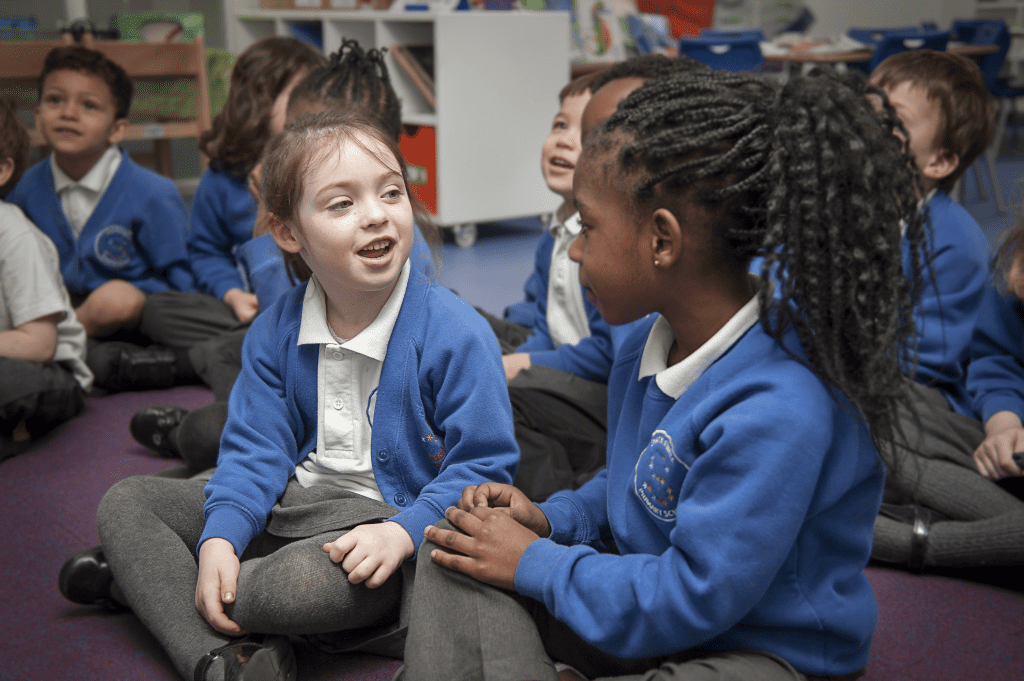Get bang for your ‘oracy’ buck
Nearly 30 years ago, Professor Bob Slavin, an educator from Baltimore, visited my school in Whitechapel. After praising our teaching of reading and writing, he asked me why so few children talked in lessons. He talked about the research he’d done into classroom talk and this one sentence has stuck with me forever: If a question’s worth asking, it’s worth everyone answering.
The next day I saw our school through Bob’s eyes. Although Ashraf chatted happily in Bengali at playtime, he didn’t speak in any lessons. Any! When five children raised their hand to answer, maybe two were chosen to respond. Three would be thwarted – ‘I was going to say that’ – and 25 children watched. Confident children claimed their unfair share of attention.
We had even tried picking on children who didn’t raise their hands (cold calling as we now know it) but this terrified the shy and risk averse children. Fear replaced safety. And still only a few talked.
Although our teaching was well planned and engaging, we could only be sure that a few children were listening – and learning – through every lesson.
‘Talk To Your Partner’ became us
We put as much passion into developing a talking school as we had in creating a reading school. It took us three months. Partners took turns in explaining what we’d explained. They turned to discuss all our questions. They practised teaching what we’d taught them. And if children couldn’t explain what we’d explained, we knew that we hadn’t been successful. Importantly, they also read about everything we taught them.
We abolished ‘hands-up’ classrooms. We abolished ‘cold calling’ and only used ‘warm calling’ – taking feedback after partners had talked.
As the months progressed, risk-averse children began to feel safer to explain their ideas to the class: shy children, children who didn’t talk much at home, children with special educational needs. Most of our children were Bangladeshi and learning to speak English, so speaking throughout every lesson and listening to others gave them new opportunities to practise the English they were gaining. We woke up our school.
As a headteacher, getting all children to talk through every lesson was the most empowering thing I ever did. Talk supported the reading and writing. Reading and writing supported the talk. Teaching and learning became a partnership between teachers and children.
Read Write Talk
I built all the Read Write Inc. programmes on ‘Talk To Your Partner’: Phonics, Fresh Start, Comprehension, Spelling, as well as our other programmes: Talk through Stories and Talk Through the Day. (In hindsight, I wish I’d called my programmes Read, Write, Talk!).
This is why Read Write Inc. schools are already ahead of the oracy game.
If we’re serious about raising achievement, we must make 100% participation in lessons what we do.
Talk To Your Partner does not exist in a vacuum
Talk To Your Partner depends on a carefully constructed age-appropriate curriculum that develops and extends children’s understanding in each area of learning or subject, as well as the vocabulary associated with it – in history, geography, RE, science. It depends on children knowing what they’ll learn, how they’ll learn it, and feeling confident that they can learn. It also depends on our ability to engage children.
Talk To Your Partner, Read Write Inc. style, means planning the talk that will help children learn throughout every lesson.
We use Talk To Your Partner for children to explain new vocabulary and knowledge, to answer every question, to share their opinions and ideas, and to practise teaching to a peer what we’ve taught them.
‘My Turn Your Turn’ supports Talk To Your Partner as a technique to teach new vocabulary, the meaning of a new word, or a line in a poem, ‘colouring’ our voice to help children articulate and remember each line or word.
Eight reasons why Talk To Your Partner can transform teaching and learning
Talk To Your Partner:
- multiplies the number of back-and-forth interactions. The number of interactions children have with us and their peers throughout the day is crucial. Talk To Your Partner is the closest we can get to full participation: 50% talk while 50% listen. Children’s progress depends on our engaging them in high-quality direct teaching and dialogue so that they can learn to articulate what they know and understand.
- is a life skill. Conversing with one person is the most common way we interact. Children learn the etiquette of conversation and discussion: how to listen to one another, to empathise, anticipate, and build on what they say.
- is a whole-school approach. We use the Talk To Your Partner routines, from Reception to Year 6. Children become accustomed to the same routines. It ensures children work with others from different backgrounds and cultures. Co-operation becomes part of school life. It creates a feeling of anticipation and togetherness.
- is simple. Once routines are embedded, teachers can focus on teaching and children’s learning, rather than trying to bolt on extra activities designed solely for talking.
- stops teachers talking for too long. Listening is tricky, so we use Talk to Your Partner to bite-size our teaching. Children are in our hands: how well we explain something, how interesting we make it, and the speed at which we speak.
- increases engagement because children expect to answer every question with a partner and to be called upon to share their response with the rest of the class. It keeps children alert and helps to avoid their minds wandering. Their engagement increases dramatically.
- provides immediate assessment. Children realise we care that they understand. By asking questions every few minutes, and listening to partners explain a point to each other, we can see if they’ve understood and can immediately correct any misconceptions. If children don’t understand, we don’t move on.
- helps children feel safe to share their thinking. Their response belongs to both partners because they have rehearsed it first. They develop the confidence to speak in front of others.
Talk To Your Partner becomes second nature
Children’s minds must be free to learn. This means practising routines until they become second nature to teachers and children. When everyone uses the same routines effectively, behaviour is transformed across the school and time is not wasted in establishing new routines in each class. Children feel safe because they are in no doubt about expectations when they move into new groups each half term for reading lessons, and between classes in key stage 2.
Coaching and motivating teachers to adopt consistent teaching and behaviour management strategies is therefore essential if we want to create a climate in which children can feel safe to learn.
Once Talk To Your Partner is truly embedded in the school’s culture, children can commit to their own and others’ learning. It depends on both staff and children being considerate to one another and having a positive attitude to teaching and learning.
The success of Talk To Your Partner depends upon everyone working together – staff and children until ‘Talk To Your Partner’ becomes what we do and who we are.

